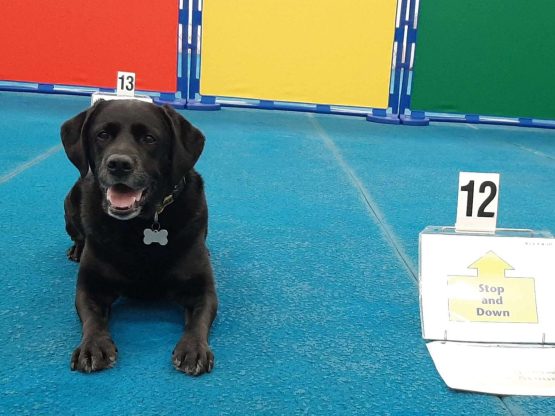Rally Obedience (Rally-O) has been an AKC titling event since 2005 that has continued to grow in popularity to this day. Charles "Bud" Kramer, a long-time obedience and agility competitor, created the sport of Rally Obedience in 2000 as a fun alternative to traditional Obedience trials. His inspiration was the "doodling" warm-up exercises competitors often use to prepare their dogs and focus the dog’s attention before entering the obedience ring. The AKC took Mr. Kramer’s proposal under review in 2000 and launched its Rally Obedience program in 2005.

Rally Obedience was envisioned as a sport that would promote the human-canine bond by allowing more natural communication in both training and competition than had been historically allowed in traditional obedience. The goal of Rally Obedience is to complete a course of traditional and non-traditional exercises (or behaviors) guided by signs that describes each exercise in both text and graphics. Depending upon the level of competition and venue, there can be anywhere between 12 and 22 signs on a course. In addition to common exercises associated with obedience training such as sit, down, stay, fronts, finishes, and heeling. Rally also incorporates exercises requiring handlers to walk around their dog as it remains in a sit, down or stand, spirals and serpentine weaves through cones, 270-degree turns, 360 circles, and backing up while heeling.
Organizations other than the AKC that also offer Rally Obedience competitions include the Australian Shepherd Club of America (ASCA); United Kennel Club (UKC); World Cynosports Rally; and Canine Work and Games (C-Wags). While they each have their own rules and regulations, the basic Rally exercises remain similar across these different venues.
The great thing about Rally Obedience is that it is not just for people interested in competition; Rally is also an excellent next step for recreational dog owner who is looking to take their basic obedience training to the next level in a fun and supportive atmosphere.
So there you have it, a brief overview of the history and benefits of Rally Obedience. Hopefully, this article has been helpful in understanding more about this fun and exciting dog sport. As always, if you have any questions or are interested in getting started with Rally Obedience training in the Cape Cod area, contact Joseph’s Obedience Training for information about their Tuesday night Rally drop-in class. Happy training!
